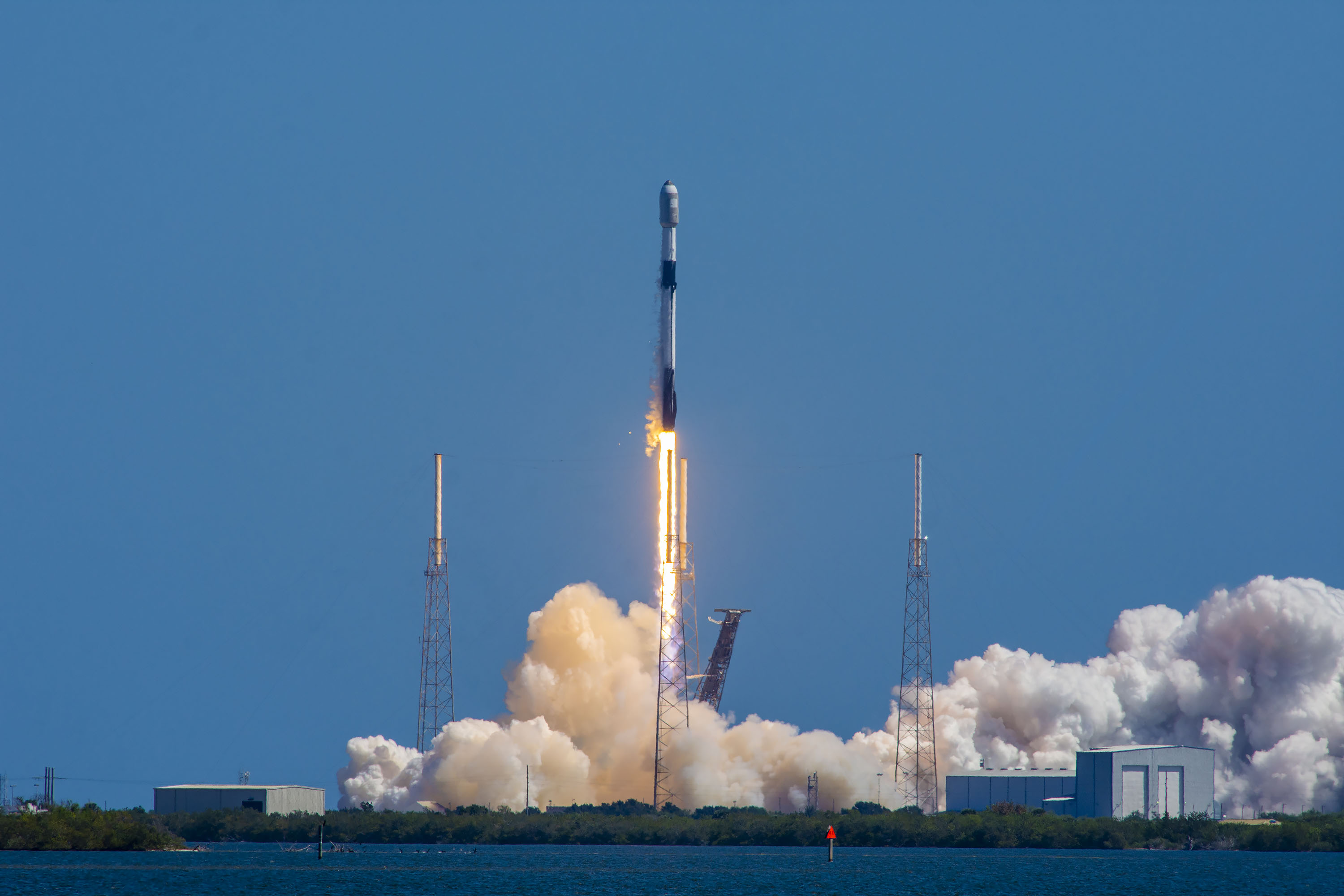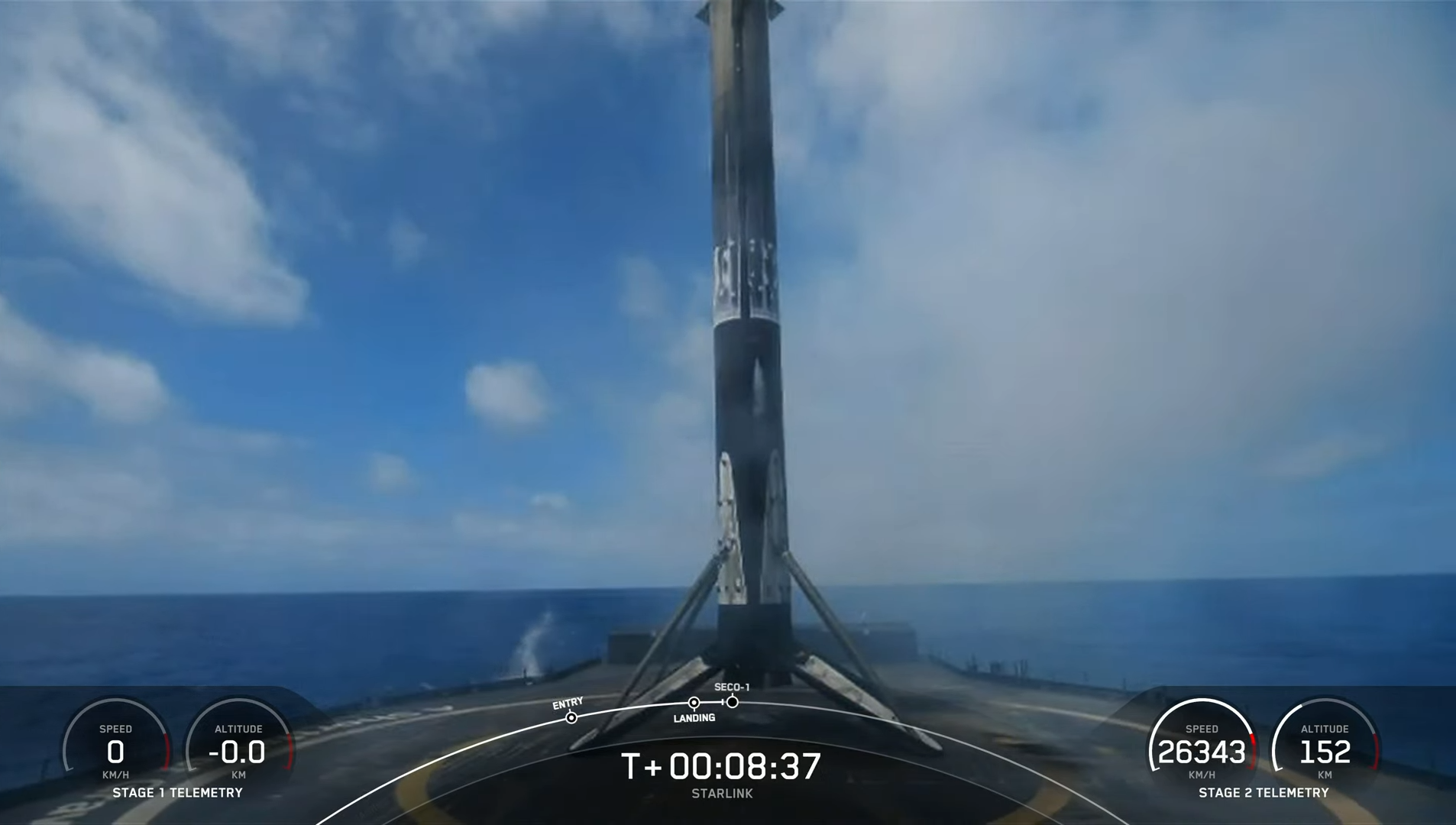SpaceX launched its 20th mission of the year on Friday (March 24), sending 56 of its Starlink internet satellites skyward and landing the returning rocket on a ship at sea.
A SpaceX Falcon 9 rocket topped with 56 Starlink spacecraft lifted off Friday at 11:43 a.m. EDT (1543 GMT) from Florida's Cape Canaveral Space Force Station.
The Falcon 9's first stage came back to Earth as planned 8.5 minutes after liftoff, making a pinpoint touchdown off the Florida coast on the SpaceX droneship A Shortfall of Gravitas.
Related: SpaceX's Starlink satellite megaconstellation launches in photos

It was the 10th launch and landing for this particular booster, SpaceX wrote in a mission description. Among its previous flights were the Crew-3 and Crew-4 astronaut missions to the International Space Station for NASA, which lifted off in November 2021 and April 2022, respectively.
The Falcon 9's upper stage, meanwhile, continued carrying the 56 Starlink satellites to low Earth orbit (LEO). It deployed all 56 satellites as planned about 65 minutes after launch, SpaceX confirmed via Twitter.

Before Friday's mission, SpaceX had launched 4,105 Starlink satellites to LEO, more than 3,750 of which are currently operational, according to astrophysicist and satellite tracker Jonathan McDowell.
Get the Space.com Newsletter
Breaking space news, the latest updates on rocket launches, skywatching events and more!
And those numbers will continue to grow: SpaceX has permission to deploy 12,000 Starlink craft in orbit and has applied for approval for another 30,000 on top of that.
Friday's launch was SpaceX's 20th of the year already. Company founder and CEO Elon Musk said last summer that SpaceX could launch as many as 100 orbital missions in 2023.
Editor's note: This story was updated at 10:40 a.m. EDT on March 24 with the new target launch time of 11:43 a.m. EDT, then again at noon EDT with news of successful launch and rocket landing, then again at 2:40 p.m. EDT with news of successful satellite deployment.
Mike Wall is the author of "Out There" (Grand Central Publishing, 2018; illustrated by Karl Tate), a book about the search for alien life. Follow him on Twitter @michaeldwall. Follow us on Twitter @Spacedotcom or on Facebook.
Join our Space Forums to keep talking space on the latest missions, night sky and more! And if you have a news tip, correction or comment, let us know at: community@space.com.

Michael Wall is a Senior Space Writer with Space.com and joined the team in 2010. He primarily covers exoplanets, spaceflight and military space, but has been known to dabble in the space art beat. His book about the search for alien life, "Out There," was published on Nov. 13, 2018. Before becoming a science writer, Michael worked as a herpetologist and wildlife biologist. He has a Ph.D. in evolutionary biology from the University of Sydney, Australia, a bachelor's degree from the University of Arizona, and a graduate certificate in science writing from the University of California, Santa Cruz. To find out what his latest project is, you can follow Michael on Twitter.









